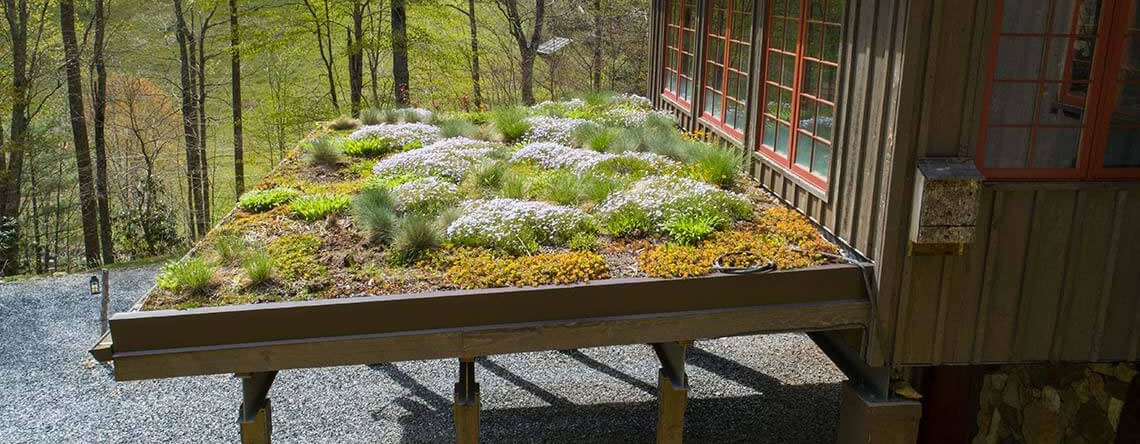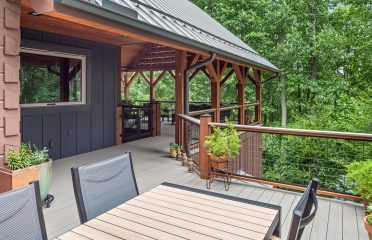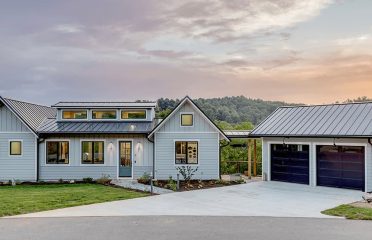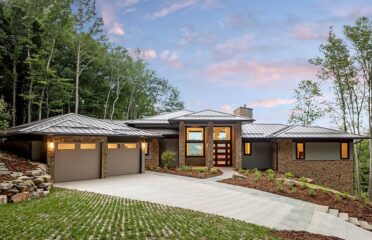Green Builders Can Reduce Your Carbon Footprint
It’s a common question. And a good question. What is green building, and why should I do it?
As a green builder in the Asheville area, we think green building is important enough to go through a rigorous process to become a Certified Green Professional from the National Association of Home Builders. Certified green builders incorporate green and sustainable building principles into homes and buildings, and we do it without driving up the cost of construction. We also have to prove we have a deep understanding of green building methods.
In this post, we’ll give you an overview of what green building means and some of the benefits of using green building techniques when building your custom home or when remodeling or adding onto your existing home.
What Green Builders Do
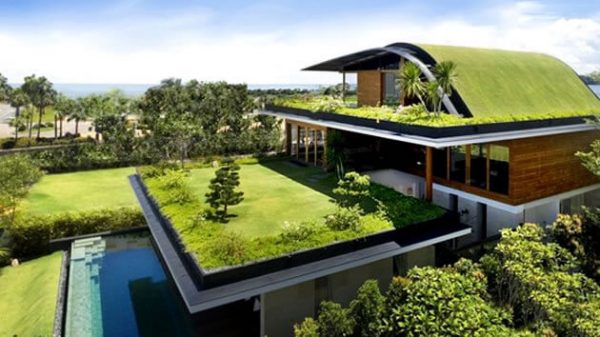
Instead of stark roofing, these homeowners created a usable living roof on each level. A big green benefit is the reduced rainwater runoff.
Sometimes called green construction or sustainable building practices, green builders apply environmentally responsible and resource-efficient building techniques to the structure and building process. Let’s break it down to what that really means.
The Green Building Council describes a green building as a building that is designed, built or operated in a way that reduces or eliminates negative impacts on our climate and natural environment. Green buildings preserve natural resources, can create positive environmental impacts, and improve quality of life.
Green builders ensure that any building can be a green building: a home, an office, a school, a hospital, a community center, or any other type of structure, as long as it includes some or all of these features:
- Uses energy, water and other resources efficiently
- Uses renewable energy, such as solar energy
- Employs pollution and waste reduction measures, and enable re-use and recycling
- Provides good indoor environmental air quality
- Uses materials that are non-toxic, ethical and sustainable
- Considers the environment in design, construction and operation
- Considers the quality of life of occupants in design, construction and operation
- Enables adaptation to a changing environment
Why Green Builders Do What They Do
Perhaps the phrase “reduce your carbon footprint” is familiar. That’s the aim of anything labeled green. According to the U.S. Environmental Protection Agency, buildings in the United States account for:
- 39% of total energy use
- 68% of total electricity consumption
- 30% of landfill waste
- 38% of carbon dioxide emissions
- 12% of total water consumption
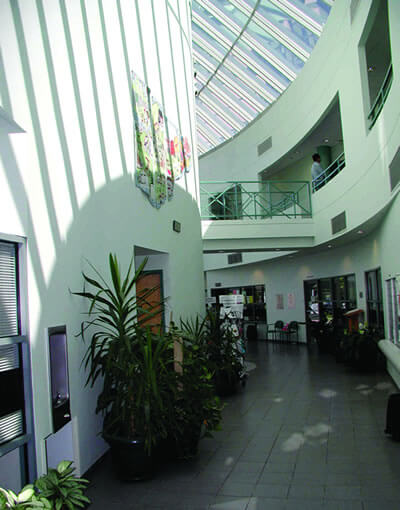
Passive solar gain can help reduce heating bills by capturing the warmth of the sun in concrete walls.
So if reducing your carbon footprint is important, then a green builder will look for ways to reduce these percentages when building your home, commercial building, office, or industrial space is an important step.
For example, when building a custom home, there’s a certain amount of land that must be cleared. It means trees must come down. Green builders look for ways to incorporate some of that felled wood into the home’s finishes, such as the mantelpiece or trim, as a way to reduce landfill waste from the construction process. We also encourage clients to consider timber sourced from sustainably managed forests, which do a good job at capturing carbon emissions.
Whenever possible, a solar panel system to heat water helps reduce a building’s electricity consumption, as does incorporating passive solar gain into the building’s design. Passive solar techniques can reduce the overall cost to cool and heat a building because it uses shade and sunshine to lessen energy use.
Benefits of Green Building
Using green building techniques will almost always save money over the life of the building. Other benefits include improved indoor air quality and less waste.
A hallmark of green building is the tight building envelope, which nearly eliminates air leaks and drafts. Think about how expensive it is to heat an older, drafty home in the winter. Green builders strive for a tight building envelope, which means heated air isn’t escaping the building. The building stays warmer longer, and it generally costs less to heat the building because the heating system doesn’t have to work as hard.
Another hallmark of green building is the improved indoor air quality. Because green builders use non-toxic materials, there’s less off-gassing that can be problematic for people with reduced lung function. Additionally, green built structures don’t typically use gas – propane or natural – which produces toxic byproducts when burned. This explains why most cooktops and ovens in a green-built home are electric or induction heat.
For most clients, we find that the long-term energy cost savings is enough to decide to build green.
Green Built Certifications
There are a number of green building programs that may be worth exploring when considering the environmental impact of building a new home, commercial office building or industrial space. These programs offer specific guidance about the construction process, and allow owners to earn certification that their building is indeed an environmentally conscious, sustainably built building.
- Green Built Homes Certification Program is a statewide residential green-building rating program administered by the Green Built Alliance. Homes receive a rating and certificate based on third-party inspections.
- LEED, or Leadership in Energy and Environmental Design, is the nationally accepted rating system for commercial and institutional green buildings. This rigorous program helps establish a standard measurement for green building.
- Green Gauge with Home Energy Score is an innovative home-assessment tool to help homeowners save money, reduce energy usage and live in spaces that are healthier for themselves and the environment. Green Gauge uses a variety of criteria such as energy and water usage, building material sustainability, indoor air quality, site walkability and landscape ecology in order to determine how “green” a home is. The energy-efficiency portion of a Green Gauge Assessment is completed using the U.S. Department of Energy’s Home Energy Score (HES). HES uses a systematic approach to provide a reliable, scientifically-based analysis of a home’s energy characteristics and overall energy efficiency, which is rated on a scale of 1 to 10.
Our Final Word
As a leading Western North Carolina green builder, we encourage our clients to consider the highest quality natural, sustainable materials and building practices available. We are always researching and testing innovative materials and techniques to ensure our work leaves the lightest footprint possible, preserving the stability of these mountains for future generations.
We can help you apply green building practices to your next project.

